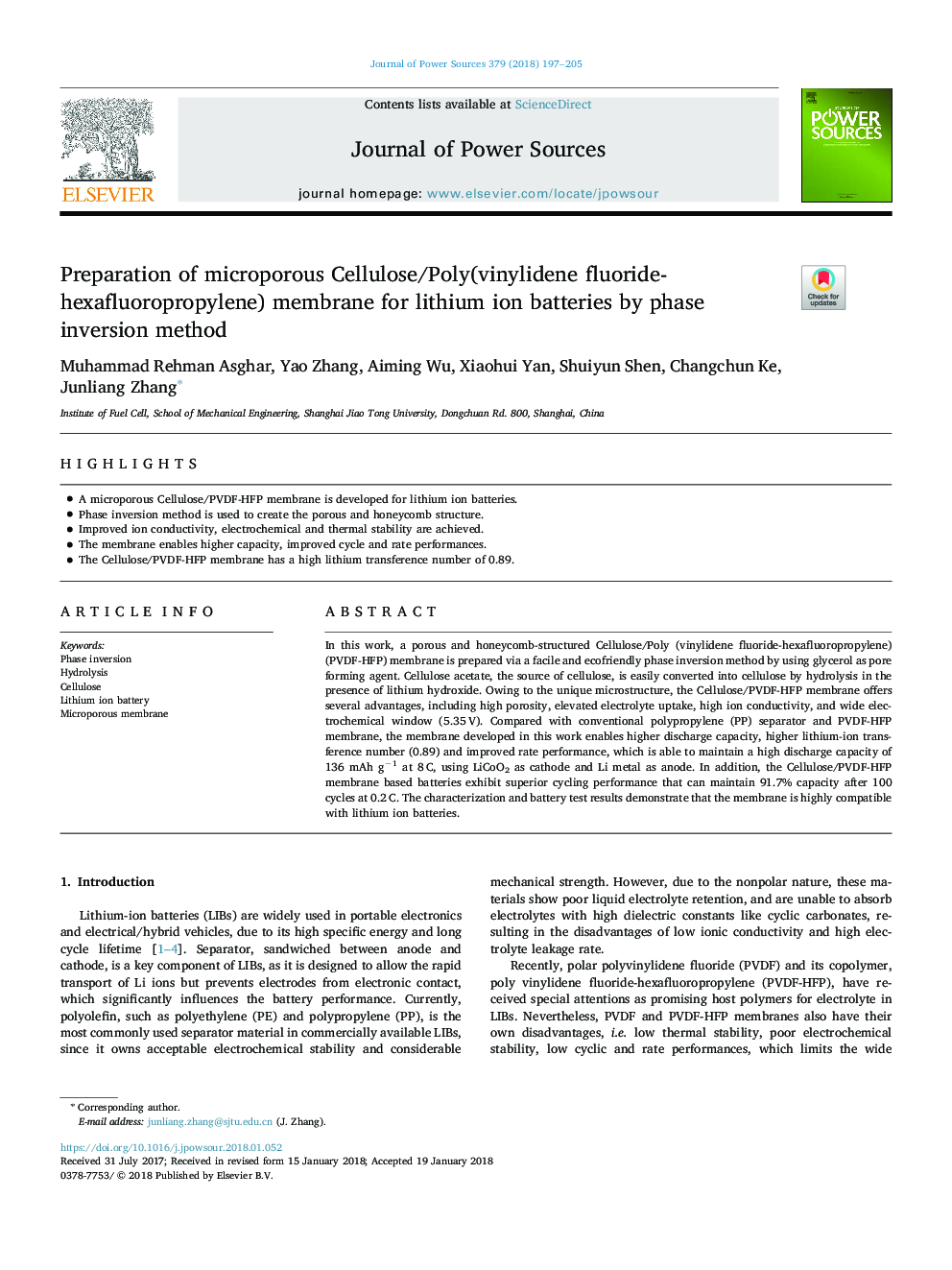| Article ID | Journal | Published Year | Pages | File Type |
|---|---|---|---|---|
| 7725714 | Journal of Power Sources | 2018 | 9 Pages |
Abstract
In this work, a porous and honeycomb-structured Cellulose/Poly (vinylidene fluoride-hexafluoropropylene) (PVDF-HFP) membrane is prepared via a facile and ecofriendly phase inversion method by using glycerol as pore forming agent. Cellulose acetate, the source of cellulose, is easily converted into cellulose by hydrolysis in the presence of lithium hydroxide. Owing to the unique microstructure, the Cellulose/PVDF-HFP membrane offers several advantages, including high porosity, elevated electrolyte uptake, high ion conductivity, and wide electrochemical window (5.35â¯V). Compared with conventional polypropylene (PP) separator and PVDF-HFP membrane, the membrane developed in this work enables higher discharge capacity, higher lithium-ion transference number (0.89) and improved rate performance, which is able to maintain a high discharge capacity of 136 mAh gâ1 at 8â¯C, using LiCoO2 as cathode and Li metal as anode. In addition, the Cellulose/PVDF-HFP membrane based batteries exhibit superior cycling performance that can maintain 91.7% capacity after 100 cycles at 0.2â¯C. The characterization and battery test results demonstrate that the membrane is highly compatible with lithium ion batteries.
Related Topics
Physical Sciences and Engineering
Chemistry
Electrochemistry
Authors
Muhammad Rehman Asghar, Yao Zhang, Aiming Wu, Xiaohui Yan, Shuiyun Shen, Changchun Ke, Junliang Zhang,
